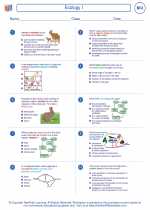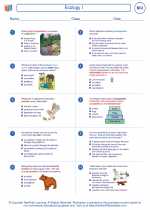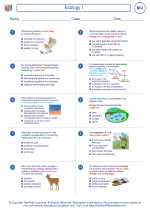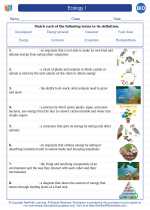Autotrophic
Autotrophic organisms are able to produce their own food using inorganic substances. This process usually involves the conversion of carbon dioxide and water into organic compounds, such as glucose, using light energy (photosynthesis) or chemical energy (chemosynthesis).
Photosynthesis
Photosynthesis is the process by which green plants, algae, and some bacteria convert light energy into chemical energy in the form of glucose. This process occurs in the chloroplasts of plant cells and involves two main stages: the light-dependent reactions and the light-independent reactions (Calvin cycle).
Light-dependent reactions
- Occurs in the thylakoid membranes of the chloroplast
- Light energy is absorbed by chlorophyll and used to split water molecules, releasing oxygen as a byproduct
- Produces ATP and NADPH, which are used to power the light-independent reactions
Light-independent reactions (Calvin cycle)
- Occurs in the stroma of the chloroplast
- ATP and NADPH produced in the light-dependent reactions are used to convert carbon dioxide into glucose
Chemosynthesis
Chemosynthesis is a process used by certain bacteria and archaea to generate energy from the oxidation of inorganic chemicals, such as hydrogen sulfide or methane. Unlike photosynthesis, chemosynthesis does not require light as a source of energy.
Study Guide
- Explain the key differences between autotrophic and heterotrophic nutrition.
- Describe the main stages of photosynthesis and the role of chlorophyll.
- Compare and contrast photosynthesis and chemosynthesis, including the types of organisms that use each process and the sources of energy involved.
- Discuss the ecological significance of autotrophic organisms in food webs and energy flow within ecosystems.
◂Biology Worksheets and Study Guides High School. Ecology I

 Worksheet/Answer key
Worksheet/Answer key
 Worksheet/Answer key
Worksheet/Answer key
 Worksheet/Answer key
Worksheet/Answer key
 Vocabulary/Answer key
Vocabulary/Answer key
 Vocabulary/Answer key
Vocabulary/Answer key
